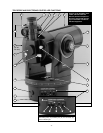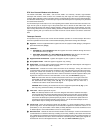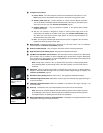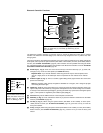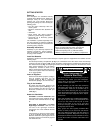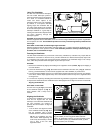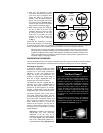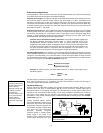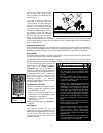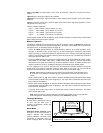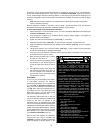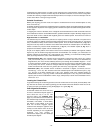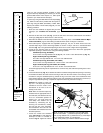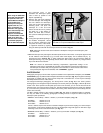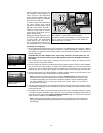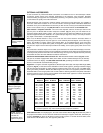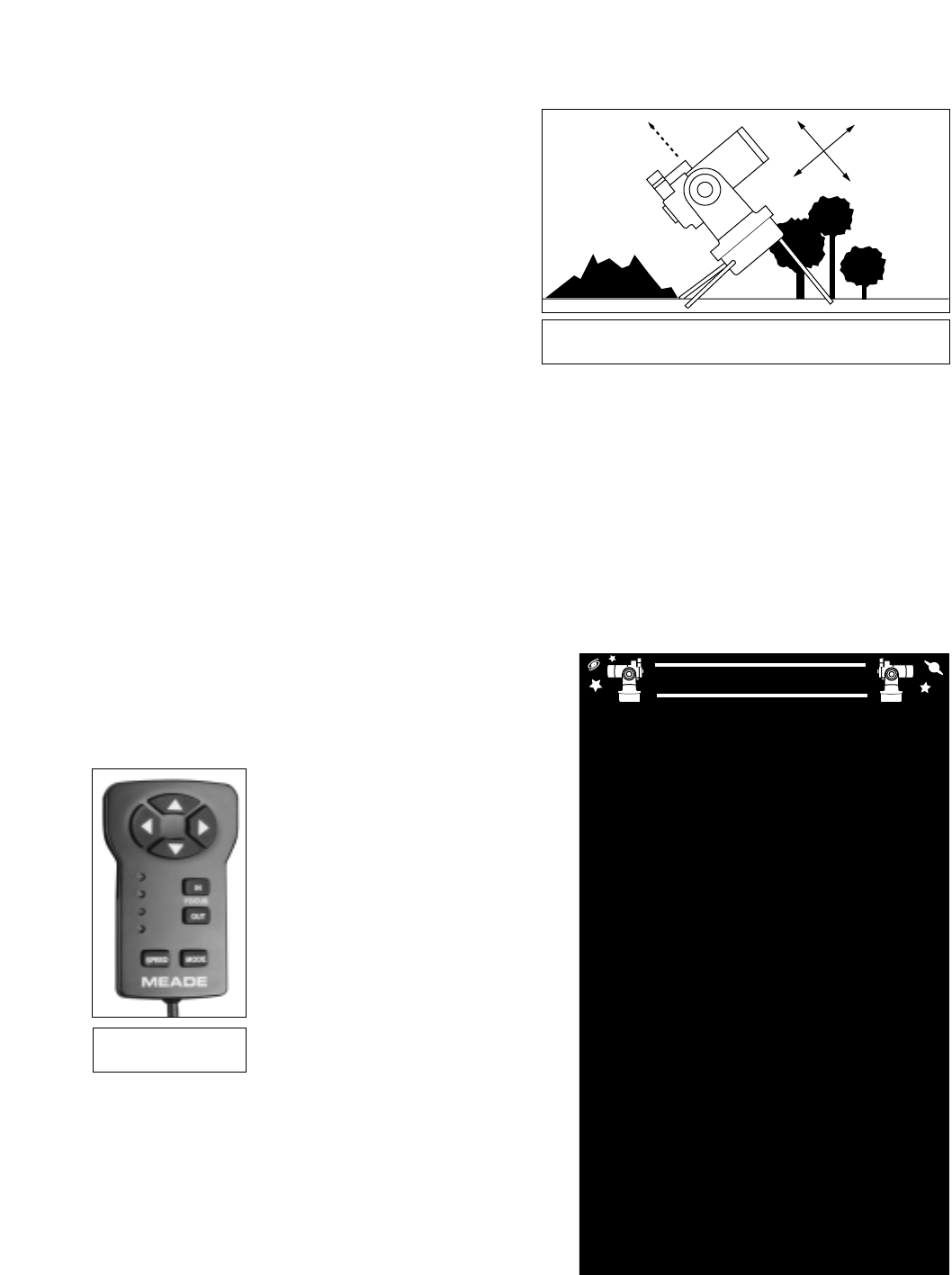
- 13 -
morning hours, before the ground has
built up internal heat, results in better
viewing conditions than during the late-
afternoon hours.
If you wish to observe a distant land
object, such as a mountain top or a bird,
you can observe by merely pointing the
telescope and looking through the
eyepiece. Set the telescope on a table
top or tripod, loosen the horizontal and
vertical locks (6 and 9, Fig. 1), and turn
the telescope towards the object you
wish to observe. Look into the viewfinder
and move the tube until you find the
object. If the viewfinder is correctly
aligned, the object now appears in the eyepiece. Center the object and focus the image using the by turning
the focus knob (8, Fig. 1). Rotate the knob clockwise to focus on distant objects and counterclockwise to
focus on nearby objects.
Astronomical Observing
As an astronomical instrument, your ETX telescope has many optical and electromechanical capabilities. It
is in astronomical applications where the high level of optical performance is readily visible. The range of
observable astronomical objects is, with minor qualification, limited only by the observer’s motivation.
Sidereal Rate
As the Earth rotates beneath the night sky, the stars appear to move from East to West. The speed at which
the stars move across the sky is called the sidereal rate.
You can observe stars and objects in the night sky using the terrestrial viewing method, but note that objects
begin to slowly drift across and out of the eyepiece field. This motion is caused by the rotation of the Earth.
You can counteract the drift by mounting the
telescope to one of the optional tripods in the
polar mode (see POLAR ALIGNMENT
PROCEDURE
, page 16). In this mode, the
motor drive in each ETX model is designed to
rotate the telescope at the sidereal rate so that
it automatically follows, that is, "tracks" the
stars. Tracking makes it easier to locate
objects and to keep them centered in the
telescope’s eyepiece. The Electronic
Controller supplied with your telescope assists
with the tracking function.
The Electronic Controller
Functions of the Electronic Controller include:
• Slewing (moving) the telescope's optical
tube assembly to an object
• Turning on the telescope motor drive to
automatically track celestial objects (when
the telescope is polar aligned)
• Changing the hemisphere of operation,
when required
• Changing tracking speed (see APPENDIX A,
page 26)
Slew Speeds
The Electronic Controller has four slew
speeds that are directly proportional to the
sidereal rate. Press the Speed key to change
the slew speed. Note each slew speed
corresponds to one of the four LED's of the
Electronic Controller.
TIPS
FOR BEGINNERS
• Try to pick an observing site away from street
and house lights, and car headlights. While
this is not always possible, the darker the site,
the better.
• Give your eyes about ten minutes to adjust to
the darkness before observing. Give your eyes
a rest from observing every ten or fifteen
minutes to relieve eyestrain.
• Try not to use a standard flashlight. Seasoned
observers use red LED flashlights or tape red
cellophane over their flashlights for setup and
map reading so they don’t have to continually
readjust their eyes to the darkness. Be careful
not to shine bright lights if there are other
observers in the area. Never shine a flashlight
into a telescope while someone is observing!
• Dress warmly. It gets chilly when you’re sitting
for prolonged periods, even on some summer
nights.
• Practice setting up your equipment during the
day or in a lighted area to become familiar with
it before going to a dark site.
• Use your 26mm eyepiece to view terrestrial
objects and wider areas of space, such as
open star clusters. Use your higher power
eyepieces when you wish to view something
up close, such as craters on the Moon or the
rings of Saturn.
•
Know your observing site. If you’re going to try
out an unfamiliar site, check it out in the daylight
for possible obstructions and pitfalls.
Polaris
Right Ascension
Declination
Fig. 10: Equatorial mounting aligns the telescope with the
celestial sphere (table-top tripod legs optional).
Fig. 11: Electronic
Controller.



